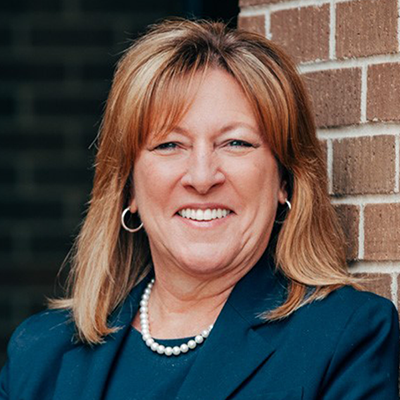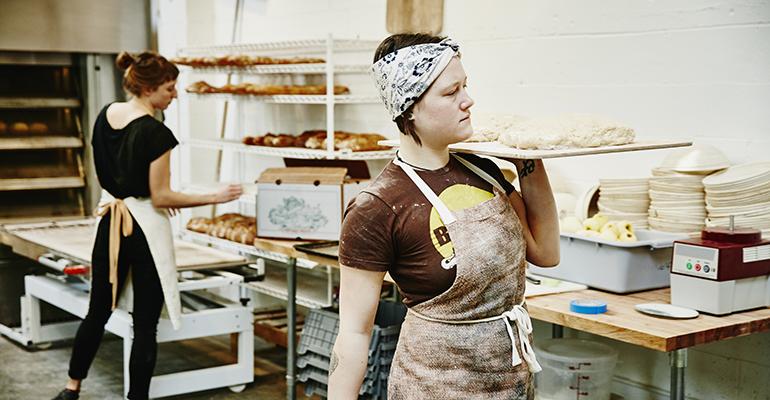Before the pandemic again, gender equity was still a challenge in leadership positions within the restaurant industry with only 22% of women in leadership positions (as compared with 47% of women in entry-level positions). But with the onset of COVID-19, that gap grew even wider as women have to increasingly choose between a changing situation at home as schools and daycares closed, and keeping up with work outside the home.
In a Restaurants Rise by MUFSO session, “Emerging Stronger on the Side of Gender Equity” sponsored by Glen Valley Foods, Women’s Foodservice Forum CEO Therese Gearhart discussed gender inequities, the restaurant industry needs to address, and how they can use the unusual circumstances of the pandemic to come out ahead as people get back in the workforce and face the “new normal.”
According to Gearhart, with the onset of the pandemic, women are 2.1 times more worried than men about being judged harshly at work for trying to balance their home life with their jobs. Additionally, one in four women industry-wide are considering leaving the workforce or downshifting.
“Mothers are more likely than fathers to feel judged with the added responsibilities of work around childcare and homeschooling,” Gearhart said. “Women are faced with the potential decision of keeping their jobs or this new job of taking care of their families full-time. Working mothers always had a second shift after a full day of work, and now the support like daycares and schools that made that possible has been upended.”
Gearhart said it will take time and a new kind of effort to reverse this worrisome trend. Here are some of her ideas:
Enforce a nondiscriminatory workforce all the time
 Gearhart, left, said that it’s not enough to put anti-discrimination policies down on paper or in employee handbooks; you have to make sure the policies are consistency followed up on. She recommends communicating these policies regularly with employees and following up to make sure the values of the company match what’s on paper.
Gearhart, left, said that it’s not enough to put anti-discrimination policies down on paper or in employee handbooks; you have to make sure the policies are consistency followed up on. She recommends communicating these policies regularly with employees and following up to make sure the values of the company match what’s on paper.
Anti-bias and anti-discrimination training is a good start, Gearhart said, but it needs to be followed up with action plans to put what employees learned into action.
“Match training with real conversations and make sure you’re actually listening and hearing people’s voices,” Gearhart said.
Anti-bias starts with recruitment
Inclusivity does not just mean diversity or hitting a certain number of quotas to change workplace culture. Create better hiring practices where you’re looking at diverse slates of candidates to begin with before even considering the right candidate. Gearhart said the “old method” of making sure to consider at least two women as final candidates for every leadership position as a good start.
“But don’t just focus on the numbers, you can get more people in the room but its not about the numbers alone,” she said. “You want to make sure you are empowering them and giving them a place and a voice at the table.”
Build a flexible work-life balance
One of the biggest challenges women face, particularly in a post-COVID world, is figuring out how to take care of these new at-home responsibilities while still keeping up and staying ahead at work.
This could look like taking meeting times into consideration for working parents who have responsibilities at home or setting aside blocks of flexible work time.
“It’s about recognizing what the needs [of the working parent] look like today,” Gearhart said. “Learn how to embrace genuine flexibility.”
Promote intersectionality
Do your policies help all women reach the next rungs of success, or do they only help white women and other advantaged groups? Gearhart said that it’s important to apply strategies of inclusivity and equity to all groups of women, and to think — as both a leader and an employee — am I only working with women who look like me? Am I only mentoring or promoting people who look like me?
“Every person should be able to bring their whole self to work,” Gearhart said. “How are you making adjustments as a leader and asking yourself what you’re being told? All women are not just one group. Look at courageous authentic conversations.”
Commit to being a people-first company
“If you put people first, then there’s no way you can underestimate the benefits of opening your ears to hear things differently,” Gearhart said. “We’re at risk of losing even more women in the workplace but if we take bold steps to rise to the moment, we can end up laying the foundation for a flexible and equitable workplace where gender diversity is accelerated to levels like never before. It’s not, ‘can you?’ or ‘can we?’ It’s ‘will you?’ or ‘will we?’”
Title sponsors for MUFSO include the Coca-Cola Company, PepsiCo Foodservice and Johnsonville Foodservice.
Contact Joanna Fantozzi at [email protected]
Follow her on Twitter: @joannafantozzi





